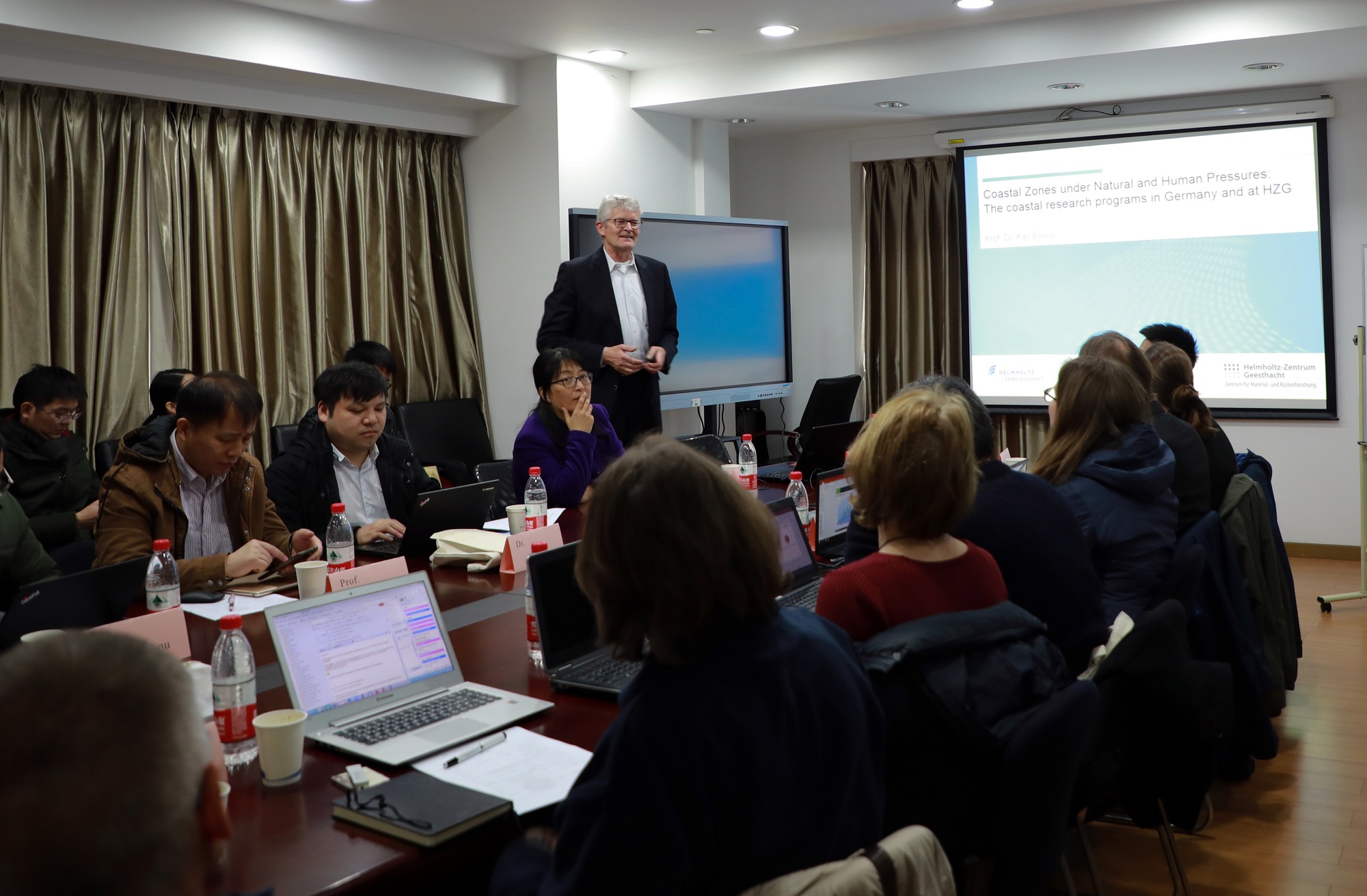News

In early March, the second seminar of the Sino-German cooperative project “Human Fingerprints in the Marginal Sea: Pollutant Diffusion and Fingerprint Studies: A Comparative Study of Offshore China, the North Sea and the Baltic Sea” sponsored by SIO was held in Hangzhou. The German delegates mainly came from the Helmholtz Offshore Research Center in Germany, the University of Hamburg, Germany, the Leibniz Institute of Baltic Sea Research, etc. The Chinese delegates were mainly from the Institute of Soil Science, Chinese Academy of Sciences, the Yantai Institute of Coastal Zone Research, Chinese Academy of Sciences, the National Marine Environmental Monitoring Center, etc.
The “Human Fingerprints in the Marginal Sea” project was jointly declared by Chinese and German scientific research institutions in 2016 and officially launched in 2017. By taking China’s coastal waters as its main research area, the project analyzes the input, migration and transformation of pollutants from human activities in offshore areas, including nutritive salt dynamic process and biogeochemical process, and carries out a study on the diffusion of pollutants from human activities in the coastal waters and the fingerprint under the combined influence of human activities and climate change through the comparative analysis of the studies in the North Sea and the Baltic Sea. The development of this cooperative project will help to further understand the distribution of pollutants from human activities in China’s offshore areas and their behaviors, and provide targeted theoretical support for the improvement and management of China’s offshore environment.
During the meeting, the project leaders from China and Germany reported on the overall progress of the project, and introduced the exchange and cooperation of scientific researchers from both sides. Other experts attending the meeting also reported on the preliminary results of the project. Scientists from both sides fully exchanged opinions on the next project tasks, co-publishing papers, reciprocal visits and exchanges between scientific researchers, and reached a consensus on the new project cooperation direction.



